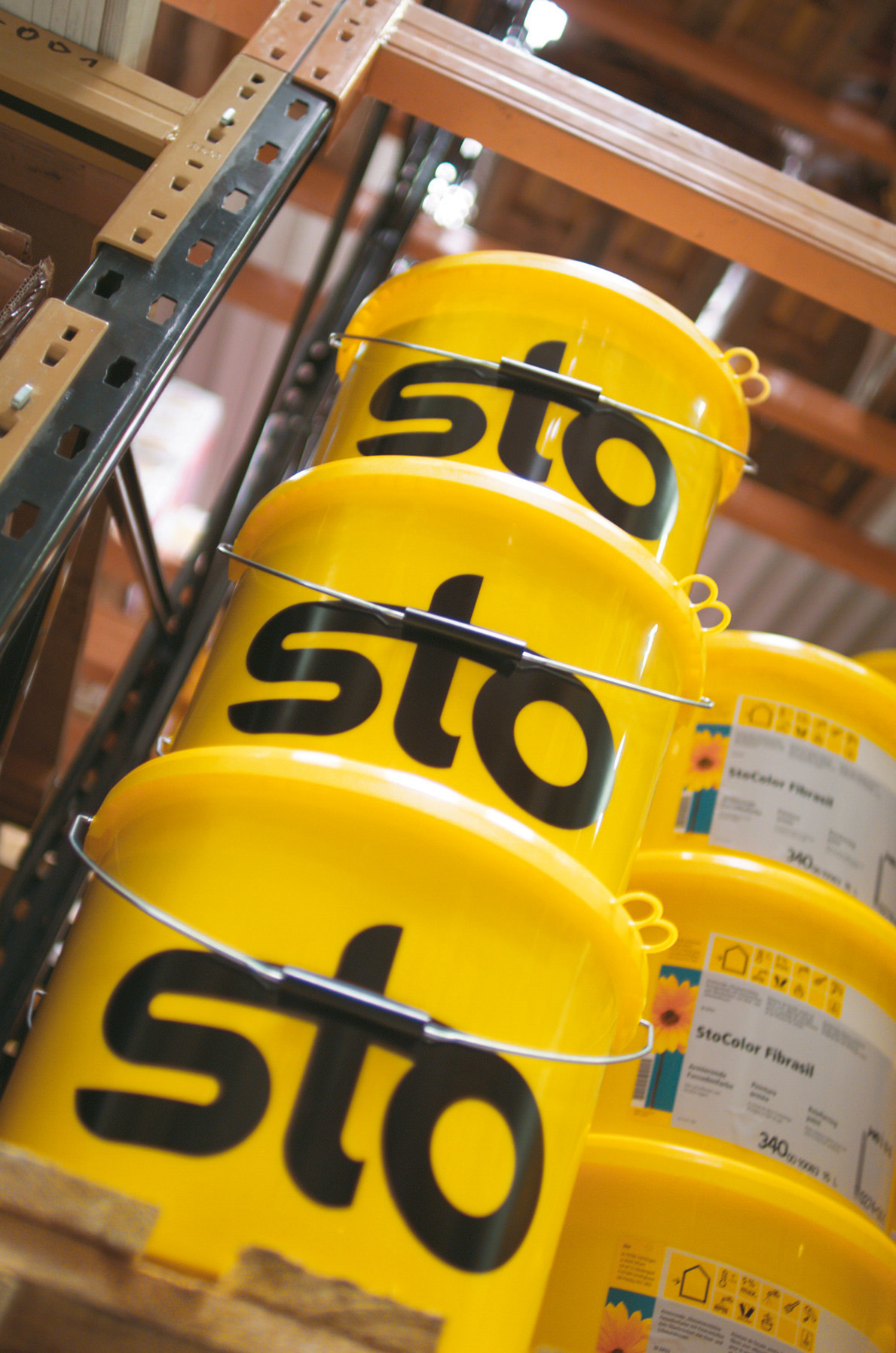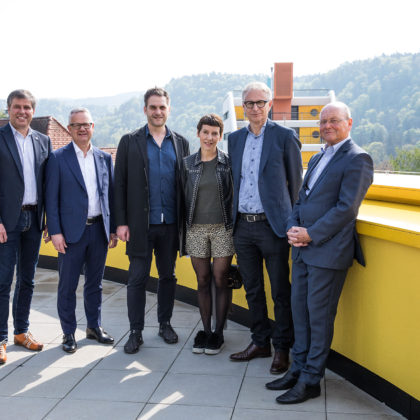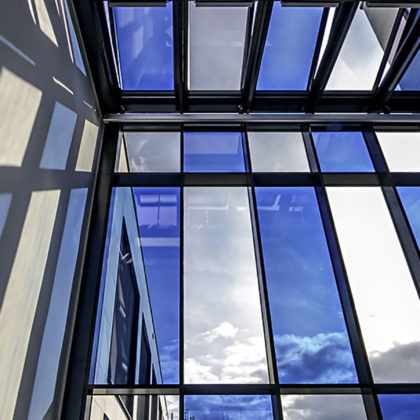StoColor Dryonic uses a phenomenon lifted straight from nature
A small insect inspired researchers to develop an exceptionally water-repellent facade paint, which is also Ger-many’s first CO2-neutral facade coating. StoColor Dryonic diverts rain and condensation away in a targeted manner thanks to its microtextured surface, ensuring a clean and dry facade without the need for biocidal film preservative.
So as to not die of thirst in west Africa’s Namib desert, the fog-basking beetle climbs to the ridge of the sand dunes every day at the break of dawn and stands on its head. The morning dew condenses on its shell and the water droplets collected in this way trickle through the grooves on its back, directly into its mouth. Without diverting water in this targeted manner, the two-centimetre-long black beetle would not be able to survive in the dry desert, where it only rains once a year on average. The re-searchers copied the principle of the beetle’s shell, which is based on microtextures, when developing the new bionic fa-cade paint.
Modelled on nature…
The facade specialists from the Black Forest have been using nature as inspiration when developing new products and sys-tems for many years now. The latest development in the series of bionic products – where biological phenomena are trans-ferred to technology – is the StoColor Dryonic facade paint without biocidal film preservative. Rain and, most importantly, condensation cannot collect on its microtextured surface, unlike with conventional paints, and are therefore not absorbed by the facade system. They are distributed over a large area and quickly diverted. This long-lasting bionic effect, which even works with very intense colour shades, keeps the facade surface clean and dry.
…and exemplary when it comes to working with nature
Just as protecting the facade’s high-quality building products in the long term is one of Sto’s claims, so is energy-efficient and resource-efficient production. With this new facade paint, the manufacturer has gone one step further and has committed itself to climate-neutral production. On the basis of an Environ-mental Product Declaration (EPD), the CO2 emissions required for production are calculated and corresponding CO2 emissions certificates are acquired which benefit a climate protection project in Indonesia. This supports a small hydroelectric facility which produces over 20,000 megawatt hours of power per year, saving more than 11,000 tons of CO2 every year. A sustainability data sheet for StoColor Dryonic is available online at www.sto.de.
Eco-friendly and highly versatile
The paint can be used on all standard substrates – on external wall insulation systems as well as on monolithic building ele-ments, concrete areas, and trapezoidal facades coated using the coil coating method. The paint meets the very highest re-quirements when it comes to sustainable construction, e.g. those according to LEED or DGNB. And it is extremely robust: whereas with conventional highly pigmented paints, we must accept the risk of filler material breakdown (as they are easily scuffed, even small amounts of mechanical stress will leave light marks on the surface), StoColor Dryonic is much more resistant. This is a huge advantage in busy areas such as en-trances. The secret behind this resistance is a special formula-tion with functional filler materials.
iQ – Intelligent Technology
StoColor Dryonic belongs to the functional iQ – Intelligent Technology range of facade paints, which have additional surface properties compared to “standard” facade paints. Their innovative formulations provide added value functions that significantly increase the benefits of the paint. They offer optimum protection, durability, colour stability, and sustainability. The iQ – Intelligent Technology facade paint range is currently dominated by four of its members:
- StoColor Dryonic guarantees that the facade dries quickly after rain, fog, and dew formation, preventing damage or soiling on the facade as the result of algae and fungi, thanks to its Dryonic technology.
- StoColor X-black works like a heat shield against solar heating thanks to the NIR technology (X-black technology). This affords low light reflectance values and reduces the temperature of the facade, making it suitable for polystyrene, even when dark colours are used.
- Lotusan has a bimodal, self-cleaning surface thanks to Lotus-Effect® tech-nology. It provides active, moisture-regulated weatherproofing of the facade with outstanding protection against fungi and algae – and all without biocidal film preservative.
- StoColor Photosan is an active facade paint that effectively breaks down harmful substances such as particulates (fine respirable dust), NOX, and ozone in the ambient air by way of photocatalysis (patented VLC technology), thus improving the air quality.
 |
The fog-basking beetle was the model for the new, intelligent facade paint StoColor Dryonic.
Photo: Vladimir Wrangel
|
||
 |
Left: Standard facade paint – water dampens the surface. Right: StoColor Dryonic – water runs off the surface.Image: Sto SE & Co. KGaA |
||
 |
Germany’s first CO2-neutral facade paint: StoColor Dryonic.
Image: Sto SE & Co. KGaA
|
||
 |
Image: Sto SE & Co. KGaA
|
||
Publication free of charge, specimen copy requested



